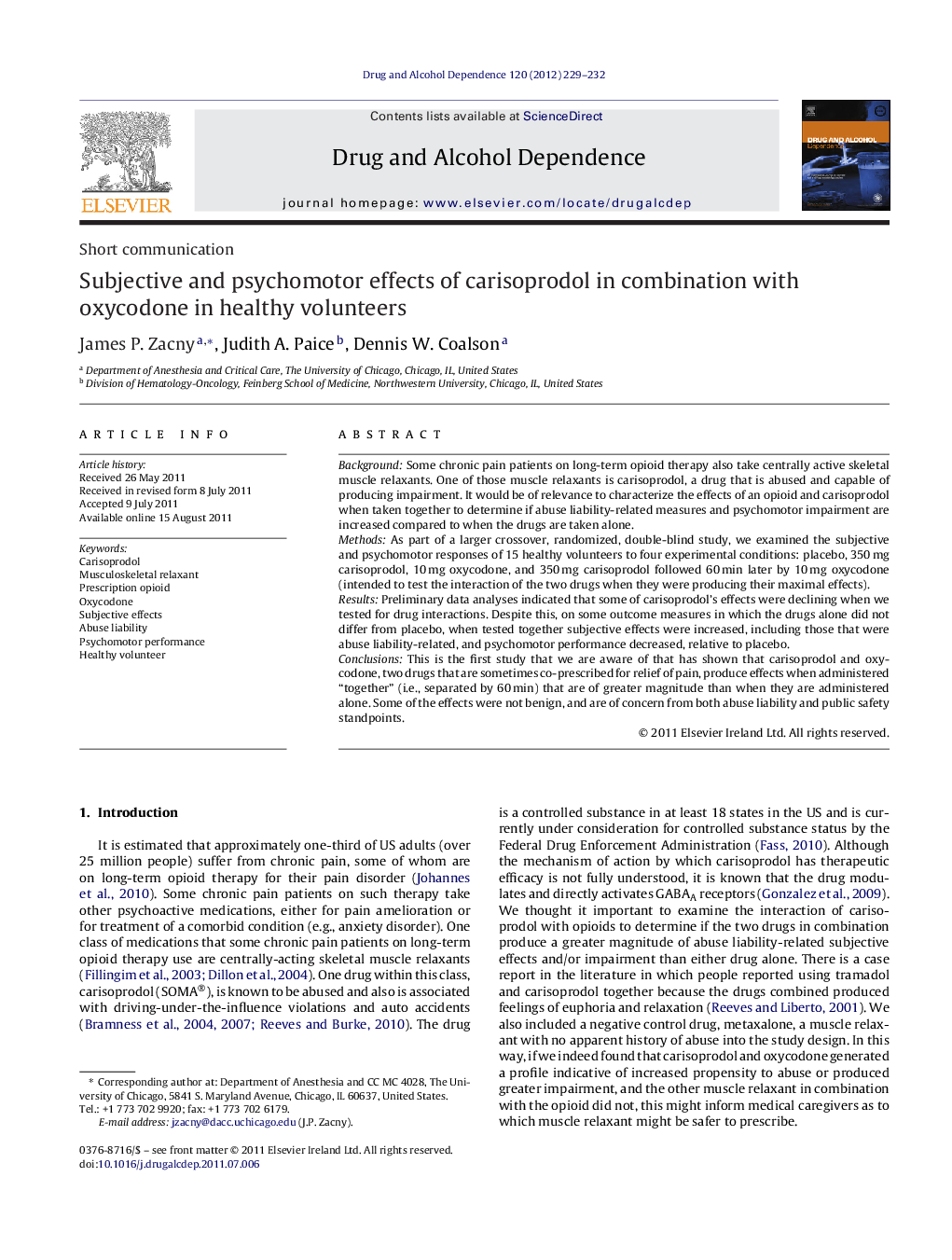| Article ID | Journal | Published Year | Pages | File Type |
|---|---|---|---|---|
| 1070210 | Drug and Alcohol Dependence | 2012 | 4 Pages |
BackgroundSome chronic pain patients on long-term opioid therapy also take centrally active skeletal muscle relaxants. One of those muscle relaxants is carisoprodol, a drug that is abused and capable of producing impairment. It would be of relevance to characterize the effects of an opioid and carisoprodol when taken together to determine if abuse liability-related measures and psychomotor impairment are increased compared to when the drugs are taken alone.MethodsAs part of a larger crossover, randomized, double-blind study, we examined the subjective and psychomotor responses of 15 healthy volunteers to four experimental conditions: placebo, 350 mg carisoprodol, 10 mg oxycodone, and 350 mg carisoprodol followed 60 min later by 10 mg oxycodone (intended to test the interaction of the two drugs when they were producing their maximal effects).ResultsPreliminary data analyses indicated that some of carisoprodol's effects were declining when we tested for drug interactions. Despite this, on some outcome measures in which the drugs alone did not differ from placebo, when tested together subjective effects were increased, including those that were abuse liability-related, and psychomotor performance decreased, relative to placebo.ConclusionsThis is the first study that we are aware of that has shown that carisoprodol and oxycodone, two drugs that are sometimes co-prescribed for relief of pain, produce effects when administered “together” (i.e., separated by 60 min) that are of greater magnitude than when they are administered alone. Some of the effects were not benign, and are of concern from both abuse liability and public safety standpoints.
